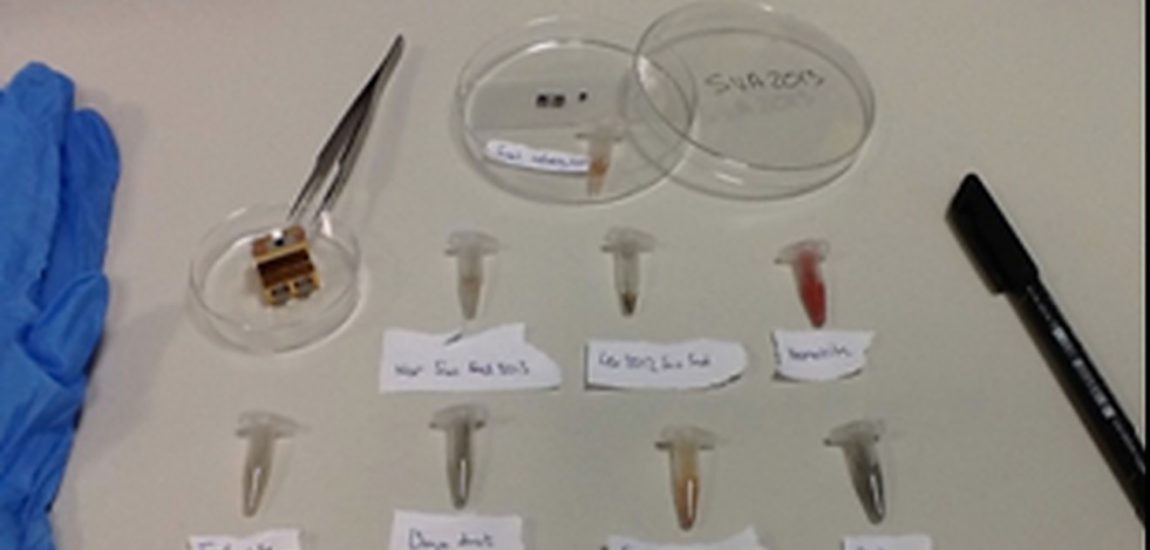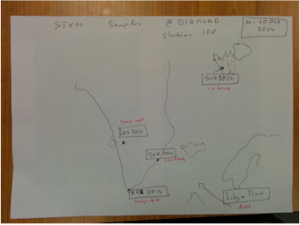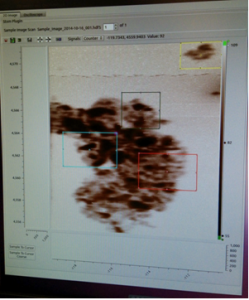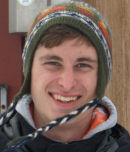
Ironing out a few problems at Beamline I08

From the 15th to the 19th of October synchrotron veteran Liane G. Benning (University of Leeds), the “iron man” legend Rob Raiswell (University of Leeds) and myself (a PhD student in glaciology at the University of Bristol) joined the I08 beamline A-team of Burkhard Kaulich, Majid Abyaneh and Tohru Araki at the Diamond Light Source, on our search for iron nanoparticles in Arctic glacial samples. Iron is a limiting nutrient in around 40% of Earth’s oceans, limiting the growth of
microscopic marine plants, phytoplankton. These little chaps are incredibly important, as they help regulate and control global element cycles. Through their photosynthesising activity they basically “eat” up the CO2 in our atmosphere. Although phytoplankton species are microscopic and at the bottom of the food chain they are the main food source for much of our oceans ecosystems. However, little is known about how they derive their food from areas of the ocean where various elements – and in our case iron – is limited.
Thus with this beam time our aim was to be the first researchers to investigate the reactivity and bioavailability (how attractive the iron is for eating by phytoplankton) of iron nanoparticles that are present in glacial melt waters or iceberg sediments from the Arctic using the powerful analytical capabilities of the new station SXM I08 station at Diamond Light Source. Our research goal was to find out if glacially derived iron may be an important nutrient source for marine phytoplankton. The visit involved plenty of coffee (as all academic visits must), three large meals a day (well for me anyway…), great science (obviously!), a splash of Maybelline nail varnish (!?), and to my knowledge the first synchrotron selfie – breaking both waistline, scientific and social media boundaries in less than one week.
Having never been to a synchrotron research facility, I arrived to Didcot Parkway station on a drizzly Tuesday night, starry eyed and excited. Despite being dark when our taxi drove into the science park in which Diamond is based, the Light Source stood out as an imposing space-age “donut”. To me it looked like it would be more at home in science fiction than the Oxfordshire countryside. Armed with lovingly collected samples of iceberg sediment and subglacial melt water sediment from the Greenland ice sheet and Svalbard in the Arctic, as well as continental dust from Libya (see ‘map’ above), we went about preparing samples for analysis on Wednesday morning.


Having never been to a synchrotron research facility, I arrived to Didcot Parkway station on a drizzly Tuesday night, starry eyed and excited. Despite being dark when our taxi drove into the science park in which Diamond is based, the Light Source stood out as an imposing space-age “donut”. To me it looked like it would be more at home in science fiction than the Oxfordshire countryside. Armed with lovingly collected samples of iceberg sediment and subglacial melt water sediment from the Greenland ice sheet and Svalbard in the Arctic, as well as continental dust from Libya (see ‘map’ above), we went about preparing samples for analysis on Wednesday morning.
During our four days at Diamond, we would be using the new instrumental setup at I08, a newly commissioned beamline run by Burkhard Kaulich and his team. Having closely studied our samples using traditional chemical and high-resolution micro-spectroscopy techniques (such as bulk extractions, TEM imaging and EELS analysis), we needed the cutting edge synchrotron technique for the iron speciation and thus us a novel insight into the iron nanoparticles that we have previously identified. The soft X-ray scanning transmission X-ray spectromicroscopy (STXM for short) on the newly commissioned beamline I08 combines an unrivalled combination of high spatial resolution microscopy with chemical sensitivity, especially important for the small iron particles in our glacial sediments that we’ve found and published about previously.
Despite still being a commissioning beamline, the measurements on I08 were a great success. We managed to examine 4 samples (1 more than expected) and will be able to construct energy-stacked maps and spectral libraries of iron nanoparticle distributions and speciation in Arctic settings. Naturally this will be our future publication. This would not have been possible without the dedication and hard work (even at strange late hours) of the beamline scientists Burkhard Kaulich, Majid Abyaneh and Tohru Araki – thanks guys!
About the author
Jon Hawkings is a PhD student at the University of Bristol, School of Geographical Sciences (Bristol Glaciology Centre). He is a glacial biogeochemist studying ice sheet impact on marine biogeochemical cycles. Using a range of geochemical techniques, from aqueous chemistry to mineralogy, he is currently investigating the flux and bioavailability of glacially derived nutrients. His primary supervisors are Jemma Wadham and Martyn Tranter (Bristol Glaciology Centre, University of Bristol), and he is also part supervised by Liane Benning and Rob Raiswell (Cohen Lab, University of Leeds).

